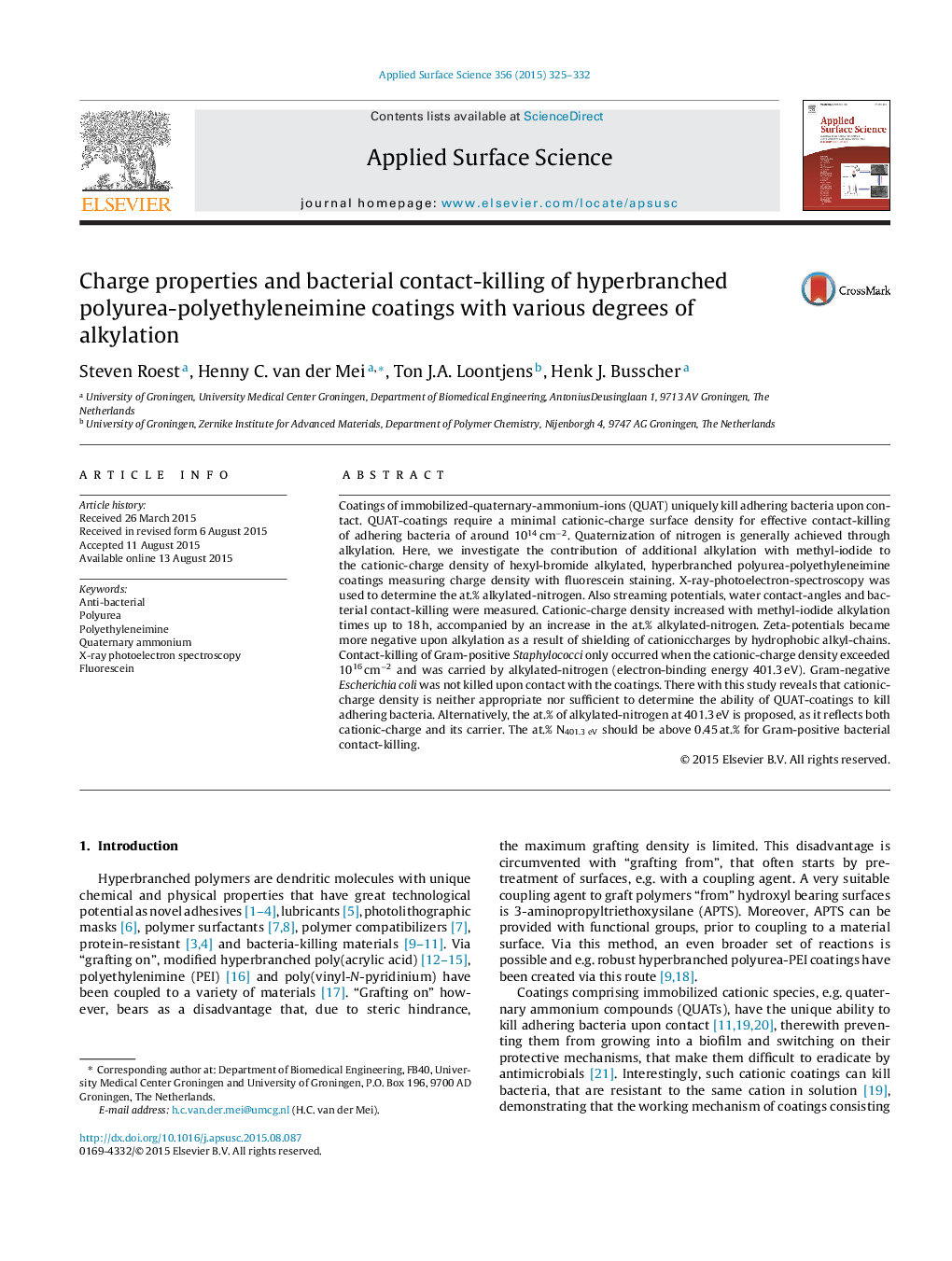| Article ID | Journal | Published Year | Pages | File Type |
|---|---|---|---|---|
| 5348929 | Applied Surface Science | 2015 | 8 Pages |
Abstract
Coatings of immobilized-quaternary-ammonium-ions (QUAT) uniquely kill adhering bacteria upon contact. QUAT-coatings require a minimal cationic-charge surface density for effective contact-killing of adhering bacteria of around 1014Â cmâ2. Quaternization of nitrogen is generally achieved through alkylation. Here, we investigate the contribution of additional alkylation with methyl-iodide to the cationic-charge density of hexyl-bromide alkylated, hyperbranched polyurea-polyethyleneimine coatings measuring charge density with fluorescein staining. X-ray-photoelectron-spectroscopy was used to determine the at.% alkylated-nitrogen. Also streaming potentials, water contact-angles and bacterial contact-killing were measured. Cationic-charge density increased with methyl-iodide alkylation times up to 18Â h, accompanied by an increase in the at.% alkylated-nitrogen. Zeta-potentials became more negative upon alkylation as a result of shielding of cationiccharges by hydrophobic alkyl-chains. Contact-killing of Gram-positive Staphylococci only occurred when the cationic-charge density exceeded 1016Â cmâ2 and was carried by alkylated-nitrogen (electron-binding energy 401.3Â eV). Gram-negative Escherichia coli was not killed upon contact with the coatings. There with this study reveals that cationic-charge density is neither appropriate nor sufficient to determine the ability of QUAT-coatings to kill adhering bacteria. Alternatively, the at.% of alkylated-nitrogen at 401.3Â eV is proposed, as it reflects both cationic-charge and its carrier. The at.% N401.3 eV should be above 0.45Â at.% for Gram-positive bacterial contact-killing.
Keywords
Related Topics
Physical Sciences and Engineering
Chemistry
Physical and Theoretical Chemistry
Authors
Steven Roest, Henny C. van der Mei, Ton J.A. Loontjens, Henk J. Busscher,
